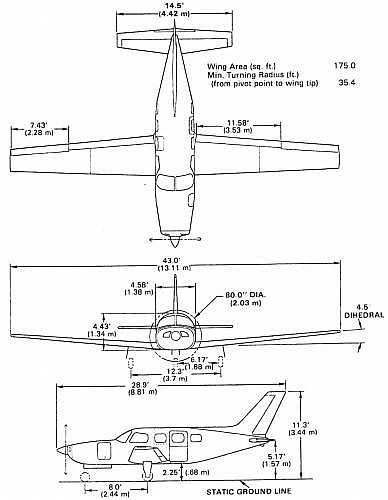Pilot Reported "Engine Out" And Was Attempting An Emergency
Landing
The estate of Tina M. Stallings has filed a wrongful death suit
against the estate of a pilot and several aviation companies as a
result of an accident which occurred in October, 2009. Stallings
and her daughter Cami Copland, age 7, were the passengers on board
the PA-46 when it went down. All three were fatally injured when
the plane impacted the ground and caught fire. A report
published by the NYC Regional Media Group indicates that the suit
charges that the pilot, Thomas Scott Long, failed to report a blood
sugar problem to the FAA when he applied for his 2nd class medical
certificate. The NTSB factual report indicated that there were "845
(mg/dl ) glucose" detected in Scott's urine. and "6.3 (%)
hemoglobin A1C" detected in his blood.

The pilot, age 44, held a commercial pilot certificate, with
ratings for airplane single-engine land, airplane multiengine land,
and instrument airplane. The pilot's most recent FAA second-class
medical certificate was issued on September 26, 2007. The pilot's
logbook was not recovered. According to an insurance application
dated January 21, 2008, the pilot had a total flight experience of
2,750 hours; of which, 110 hours were in the same make and model as
the accident airplane.
The pilot applied for an FAA second-class medical certificate on
October 27, 2008; however, that application noted 3+ glucose in the
urine and was deferred due to “possible diabetes.” On
November 27, 2008, the FAA sent a written request to the pilot for
a “...report from your treating physician to include a
statement of any complications and a current glycosylated
hemoglobin (i.e., hemoglobin A1c) test…” The FAA did
not receive any further correspondence from the pilot or a treating
physician and the application remained in a deferred state.
According to the NTSB, on October 23, 2009, at 2017 EDT, the
Piper PA 46-350P, N98ZZ, collided with wooded terrain during an
emergency approach to Zephyrhills Municipal Airport (ZPH),
Zephyrhills, Florida, following a reported loss of engine power.
The certificated commercial pilot and two passengers were killed.
The personal flight was conducted under the provisions of 14 Code
of Federal Regulation Part 91. Visual meteorological conditions
prevailed and an instrument flight rules flight plan was filed for
the planned flight to Lakeland Linder Regional Airport (LAL),
Lakeland, Florida. The flight departed Gainesville Regional Airport
(GNV), Gainesville, Florida at 1943.

According data from the Federal Aviation Administration (FAA),
at 2006, the pilot was in radar and radio contact with Tampa
terminal radar approach control (TRACON). At that time, the
airplane was in cruise flight at 5,000 feet mean sea level (msl).
About 2 minutes later, the TRACON controller cleared the flight to
descend to 3,000 feet, which the pilot acknowledged. At 2014, the
controller cleared the flight to descend to 2,000 feet, and
instructed the pilot to report LAL in sight. The pilot acknowledged
the clearance and reported LAL in sight. The controller then
cleared the flight for a visual approach to runway 27 at LAL, which
the pilot acknowledged. About 30 seconds later, the pilot declared
an emergency and requested assistance to the nearest airport. The
controller provided a vector and distance to the nearest suitable
airport, ZPH, and the pilot subsequently reported "engine out,
engine out." The airplane impacted wooded terrain about 4 miles
northeast of runway 22 at ZPH. A postcrash fire consumed a majority
of the wreckage.
Fueling records revealed that the pilot fueled the airplane with
16.4 gallons of 100 low-lead aviation gasoline, prior to departure
from GNV.

The six-seat, low-wing, retractable-gear airplane, serial number
4636169, was manufactured in 1998. It was owned by Stalling's
husband's company, Citrus Aviation Inc. Review of the airplane's
maintenance logbooks revealed that its most recent annual
inspection was completed on December 9, 2008. At that time, the
accident engine was installed on the airplane. The accident engine
had accumulated 493.1 hours since new. The airframe had accumulated
1,910.5 hours since new.
Further review of the engine logbook revealed that it had been
removed from another airplane on February 17, 2006. The engine was
stored and subsequently sold to the owner of the accident airplane.
The lawsuit also charges that the airplane was fitted with "flawed
parts." The suit was filed in Circuit Court in Polk County, FL.
 ANN's Daily Aero-Linx (04.13.24)
ANN's Daily Aero-Linx (04.13.24) ANN's Daily Aero-Term (04.13.24): Beyond Visual Line Of Sight (BVLOS)
ANN's Daily Aero-Term (04.13.24): Beyond Visual Line Of Sight (BVLOS) Airborne 04.09.24: SnF24!, Piper-DeltaHawk!, Fisher Update, Junkers
Airborne 04.09.24: SnF24!, Piper-DeltaHawk!, Fisher Update, Junkers Aero-News: Quote of the Day (04.14.24)
Aero-News: Quote of the Day (04.14.24) ANN's Daily Aero-Term (04.14.24): Maximum Authorized Altitude
ANN's Daily Aero-Term (04.14.24): Maximum Authorized Altitude





